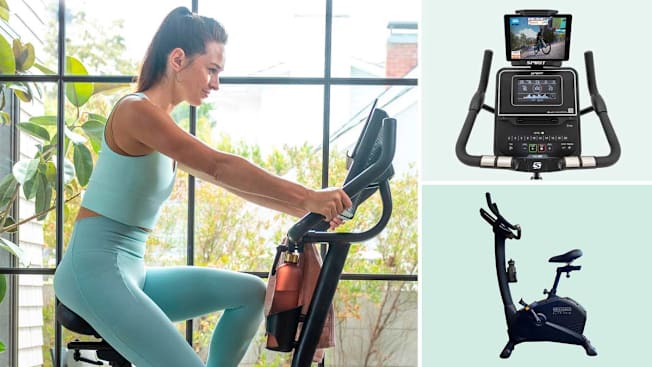3 Best Upright Exercise Bikes of 2026, Expert-Tested and Reviewed
Our new tests of stationary bikes rate models from several key brands of upright cycles. We found that price is not a reliable marker of quality.
When you shop through retailer links on our site, we may earn affiliate commissions. 100% of the fees we collect are used to support our nonprofit mission. Learn more.

The quintessential stationary bike is the upright. Unlike indoor cycling bikes popularized by brands such as Spinning and Peloton, which are more geared toward high-intensity workouts that mimic road biking, uprights are beginner-friendly and are designed to accommodate a wider variety of users and workout intensities.
That doesn’t mean you can’t get a challenging workout on an upright bike, though, because you definitely can. Some models even offer connectivity with subscription-based exercise apps that open up huge libraries of workouts that automatically adjust your bike’s resistance as you progress through each video.
But our testers think the best bikes offer an interesting variety of programming even without a subscription. “You shouldn’t have to connect your own device or pay extra for an exercise subscription in order to get a lot of different workout options with your bike,” says Sarah Bogdan, who leads CR’s testing of exercise equipment.
How CR Tests Upright Exercise Bikes
To assess adjustability, our testers take various key measurements, such as the distance from the seat to the pedals and from the seat to the handlebars, while the seat is in its highest and lowest positions, as well as forward-most and backward-most positions (if this adjustment is available). High-scoring models have wide ranges of these measurements, which means the bike can fit people with a variety of arm and leg lengths.
Our testers also assess the comfort of the bike’s seat. To evaluate stability, we test how much force is required to tip each bike over, and we factor in things like the width of the bike’s base. Our display assessment incorporates a number of judgments about the ease of reading and interacting with the machine’s controls and screen, while the programming score reflects the variety of onboard programs and whether it has certain key programming features like customizable programs you can store on the bike or programs that will adjust the resistance level automatically to help you meet a target heart rate.




























